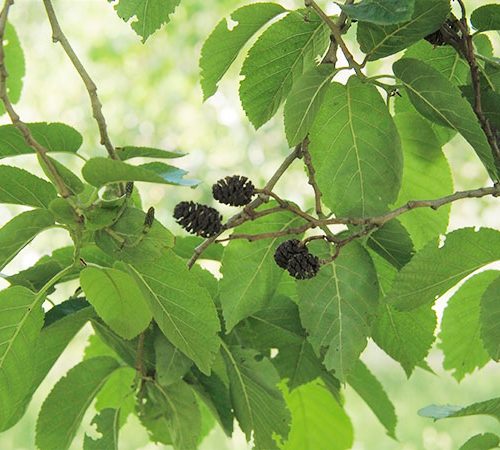(This is the online version of the paper booklet available at ticket offices in the Garden.)
Our trees provide a framework around which the other elements of the Garden have evolved. The current site was originally acquired to accommodate a wide range of trees, and many of the mature specimens seen along the Main Walk and around the perimeter of the western half of the Garden date back to its establishment in 1846.
All plants in the plant kingdom are grouped into families which share similar characteristics. This is demonstrated in the western half of the Garden, where trees were planted by family as a teaching resource for University students. These family groupings followed the arrangement set out in the early 1800s by Augustin de Candolle, the foremost authority in plant classification of the time.
Download the Trees of the Botanic Garden Trail booklet
Download the Trees of the Botanic Garden Trail map only.
From tiny plants to record-breakers
At their most extreme, trees are examples of the plant kingdom at its most impressive. The tallest tree in the world, a Coastal Redwood (Sequoia sempervirens) nicknamed ‘Hyperion’, reaches 115m; the largest in diameter is a Baobab (Adansonia digitata) in South Africa, and a Norwegian Spruce (Picea abies) in Sweden has lived for 9,500 years. Yet trees can also be surprisingly delicate, as seen in the feathered edges of the leaves of Japanese Maple (Acer palmatum) or the quivering leaves of Quaking Aspen (Populus tremula). Worldwide, estimates suggest that there are around three trillion trees, of which around 15 billion are felled annually, and five billion planted.
Trees in the Garden
 Trees are either deciduous, shedding leaves at the end of the growing season, or evergreen, having foliage that persists through the year. The foresight of previous CUBG Directors and Curators means we now have an extensive and mature tree collection here in the Garden. In the 1840s, under the direction of John Stevens Henslow (founder of the Garden on this site), Curator Andrew Murray planted trees in families. This facilitated botanical education based around similarities and differences between species within those families.
Trees are either deciduous, shedding leaves at the end of the growing season, or evergreen, having foliage that persists through the year. The foresight of previous CUBG Directors and Curators means we now have an extensive and mature tree collection here in the Garden. In the 1840s, under the direction of John Stevens Henslow (founder of the Garden on this site), Curator Andrew Murray planted trees in families. This facilitated botanical education based around similarities and differences between species within those families.
Many of the trees in the Garden have notable histories. Our Dawn Redwood (Metasequoia glyptostroboides) by the Lake is the first example of its species to be grown outside of its native China, and the Giant Redwood (Sequoiadendron giganteum) next to it is from the first batch of seed exported from America. The picture shows former Garden Director John Gilmour next to the Dawn Redwood in 1955.
A living collection
 Like all specimens in the Garden, trees have a finite life. In wildlife reserves and forests, decaying wood provides a valuable habitat for numerous animals, plants and fungi, and so dying or dead trees are frequently left in place. However, a Botanic Garden exists as a resource of living plant material for use by researchers, so we usually remove damaged or dead trees and replace them with new specimens. An example of such replacement can be found on the Main Walk: on the north side of the crossroads stands a magnificent Cedar of Lebanon (Cedrus libani), which was formerly paired with a fine Atlantic Cedar (Cedrus atlantica) on the south side. In 2018, a long dry summer was followed by a wet autumn, and the crown of the tree split under the weight of the water it had absorbed. After the old tree had been removed, the Botanic Garden’s Director Beverley Glover planted an Atlantic Cedar sapling in its place. While dwarfed by its partner at present, we expect it to match its predecessor in stature in a century or two.
Like all specimens in the Garden, trees have a finite life. In wildlife reserves and forests, decaying wood provides a valuable habitat for numerous animals, plants and fungi, and so dying or dead trees are frequently left in place. However, a Botanic Garden exists as a resource of living plant material for use by researchers, so we usually remove damaged or dead trees and replace them with new specimens. An example of such replacement can be found on the Main Walk: on the north side of the crossroads stands a magnificent Cedar of Lebanon (Cedrus libani), which was formerly paired with a fine Atlantic Cedar (Cedrus atlantica) on the south side. In 2018, a long dry summer was followed by a wet autumn, and the crown of the tree split under the weight of the water it had absorbed. After the old tree had been removed, the Botanic Garden’s Director Beverley Glover planted an Atlantic Cedar sapling in its place. While dwarfed by its partner at present, we expect it to match its predecessor in stature in a century or two.















